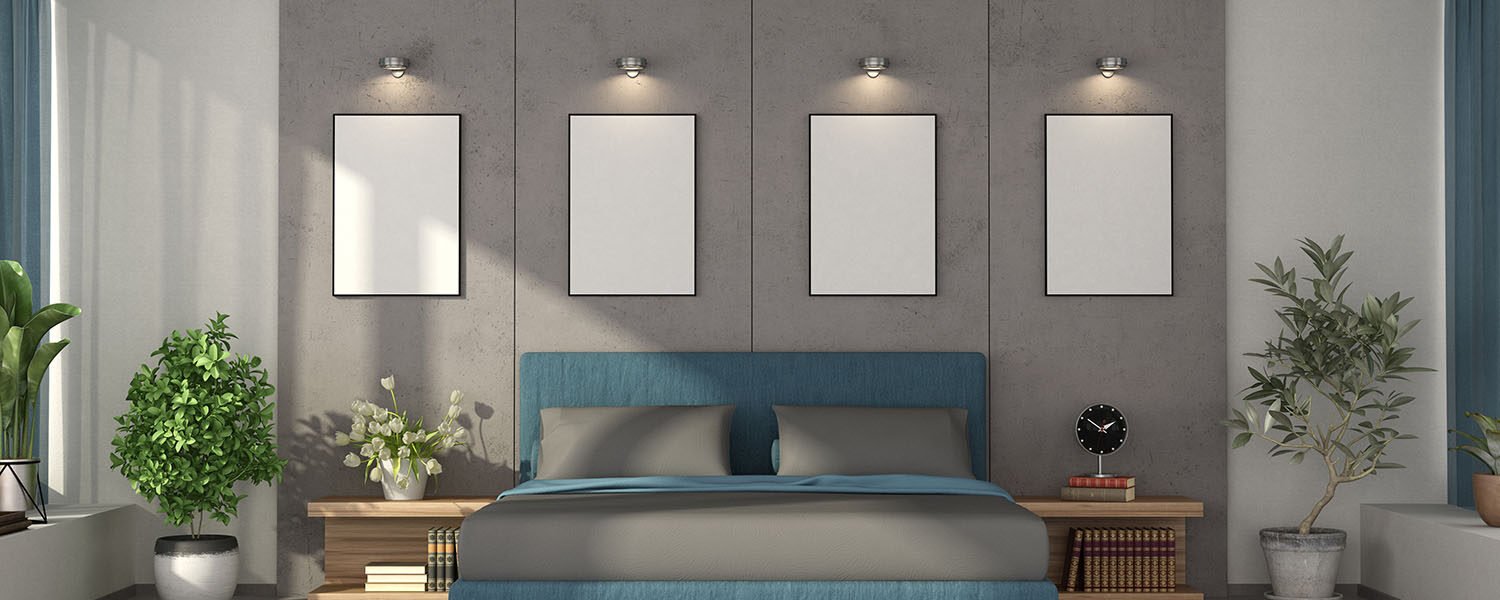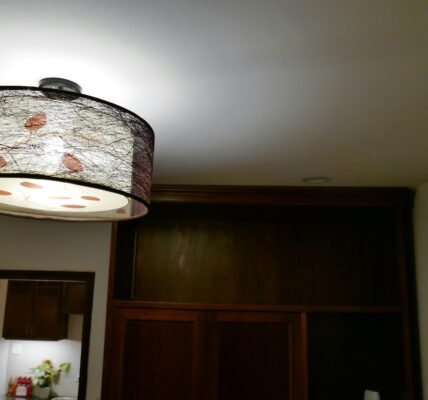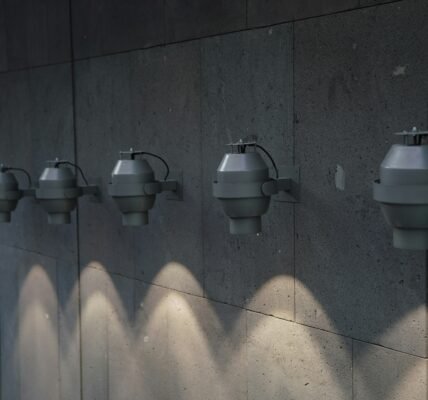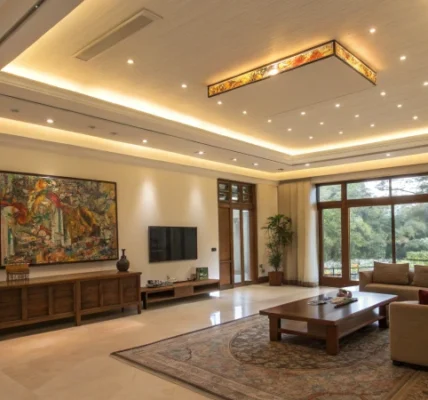Downlights, also known as recessed lights, are a type of lighting fixture that is installed directly into the ceiling. Rather than hanging from above, these fixtures are sunken into the ceiling, providing a sleek and modern aesthetic. This design not only enhances the visual appeal of a room but also allows for a more streamlined appearance, minimizing clutter from hanging fixtures.
One of the primary benefits of downlights is their versatility. They come in a variety of sizes, wattages, and beam angles, making them suitable for various lighting needs. In bedrooms, downlights can be strategically placed to offer direct illumination or gentle ambient light, depending on the desired mood. The ability to adjust the light’s intensity and direction makes them an excellent option for creating different atmospheres, whether for reading, relaxing, or getting ready in the morning.
In recent years, the popularity of downlights has escalated, particularly in residential design. This surge can be attributed to the push for more energy-efficient lighting solutions. Many modern downlights utilize LED technology, which not only consumes less power but also has a longer lifespan compared to traditional bulbs. This energy efficiency is especially appealing to homeowners seeking to reduce their energy bills while remaining environmentally conscious.
Additionally, downlights offer practical benefits such as minimizing shadows and maximizing space. When properly placed, they can illuminate dark corners and enhance the overall brightness of a room. This characteristic is particularly valuable in bedrooms, where adequate lighting is essential for both functionality and comfort. As we delve deeper into this guide, the importance of strategic downlight placement will become evident, highlighting how effective bedroom lighting can significantly improve the overall ambiance.
Understanding Bedroom Zones
When planning lighting for your bedroom, it is essential to recognize that different zones within this personal space serve distinct functions. Each zone not only requires specific types of lighting but also benefits from the strategic placement of downlights. Primarily, we can categorize the bedroom into three key areas: the sleeping zone, reading zone, and dressing area.
The sleeping zone is often the central focus in any bedroom design. This area typically encompasses the bed and should create a soothing environment conducive to rest. Downlights can be used here to provide soft, ambient illumination. Consider placing downlights on dimmer switches to adjust the light levels according to the time of day or your mood. Additionally, strategic positioning of downlights can eliminate shadows, enhancing the comforting atmosphere needed for relaxation.
Next is the reading zone, which generally includes a cozy chair or bedside table where you may enjoy your favorite book. This area benefits from brighter, task-oriented lighting. Installing adjustable downlights can allow for focused light exactly where you need it, minimizing strain on your eyes while reading. Positioning these lights to direct light over your shoulder or towards the reading material will create an effective lighting solution for this purpose.
Finally, the dressing area often involves a closet or a vanity. Well-placed downlights in this zone enhance visibility, allowing for easier outfit selection and grooming. Using brighter downlights here will ensure that you have ample light to see colors accurately and execute grooming tasks effectively. Incorporating mirror lights or up-lighting can work in tandem with downlights to achieve a well-lit dressing area.
By understanding these distinct zones within your bedroom and how downlights can be effectively utilized in each, you can create a balanced and functional environment tailored to your needs.
Key Considerations for Placement
When planning the placement of downlights in a bedroom, various factors need to be considered to ensure optimal lighting and functionality. One primary factor is the ceiling height. In rooms with standard ceiling heights, typically around eight to nine feet, downlights should be strategically placed to provide sufficient illumination without creating harsh shadows. Conversely, in rooms with higher ceilings, the position of the downlights may need adjustment, perhaps increasing spacing between fixtures to maintain an even distribution of light.
Another significant consideration is the size of the room itself. Larger bedrooms may require more downlights to achieve a balanced effect, ensuring that no areas are left inadequately lit. In contrast, a smaller bedroom might benefit from fewer fixtures, preventing the space from feeling overwhelmed and cramped. The layout of existing furniture should also play a crucial role in lighting placement decisions. For instance, downlights should ideally highlight key areas such as bedside tables, reading nooks, and walk-in closets without causing glare on surfaces or obstructing views.
The desired ambiance is essential in determining lighting placement. If a cozy, intimate atmosphere is preferred, soft and warm color temperatures can be achieved by positioning downlights to create layers of light across the room. Alternatively, a more functional, bright environment might require cooler color temperatures and strategically placed downlights capable of reducing shadows in work areas. Beyond ambiance, one must also consider brightness; the wattage or lumens of the downlights must be adequate to fulfill the room’s lighting requirements without being overly strident. By taking these considerations into account, one can effectively achieve a harmonious and well-lit bedroom environment.
Recommended Downlight Placements
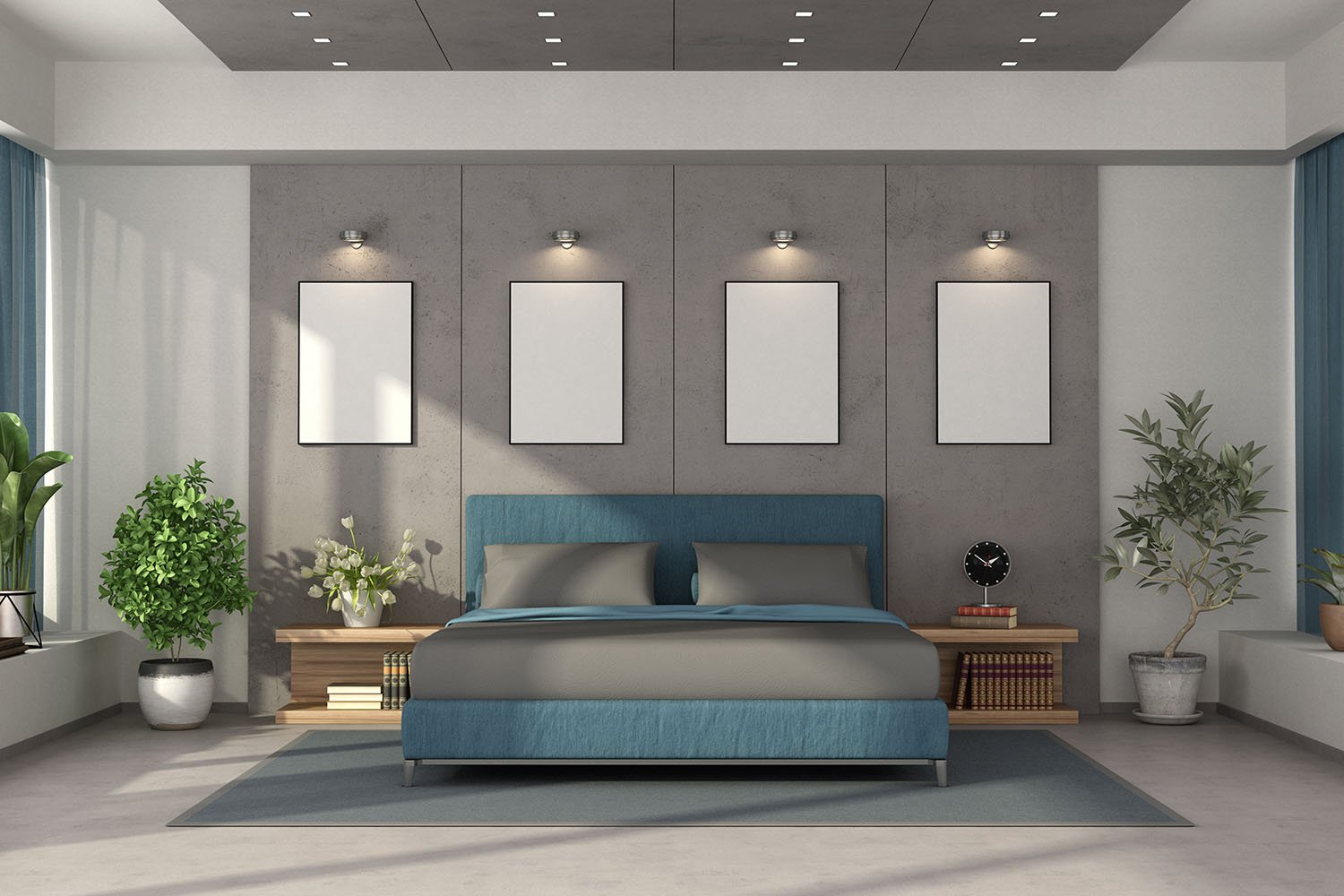
When planning the lighting design of a bedroom, strategic placement of downlights is paramount to creating an inviting and functional atmosphere. One of the most essential areas to consider is directly above the bed. Positioning downlights approximately 24 to 30 inches above the mattress can help illuminate this area effectively. Additionally, if bedside tables are present, downlights positioned over them can enhance reading or nightly routines, providing focused light without harsh glare.
Another critical space for downlight placement is within reading nooks. If there is a specific corner or cozy chair in the bedroom designated for reading, aim to install a downlight above or in front of that space. The light should ideally be at a height that guarantees adequate coverage without casting shadows on books or magazines. This strategic positioning helps maintain an inviting and relaxing environment, perfect for unwinding with a book at the end of the day.
Furthermore, integrating downlights near wardrobes can enhance functionality while maintaining aesthetics. Placing downlights above the wardrobe doors or along the internal shelving not only highlights clothing items but also ensures that the space is well-lit, making wardrobe choices easier. Ambient lighting patterns can also be established using downlights across the ceiling, positioned to create a soft, diffused glow throughout the bedroom. This approach not only improves the overall decor but can also establish an inviting ambiance perfect for relaxation.
In summary, thoughtful downlight placements can significantly affect the bedroom’s functionality and aesthetic. By considering key locations such as over the bed, in reading nooks, and near wardrobes, homeowners can achieve an effective lighting design that enhances both practicality and style.
Create Layered Lighting Effects
Layered lighting is an essential aspect of interior design, particularly in spaces such as the bedroom where ambiance plays a vital role. The combination of different types of light sources not only increases functionality but also contributes to a cohesive aesthetic. Downlights, also known as recessed lighting, can be seamlessly integrated into a layered lighting scheme to enhance both task and ambient lighting.
When considering downlight placement, it is imperative to think about how they work alongside other light sources. For instance, pairing downlights with accent lighting, such as wall sconces or table lamps, creates a well-balanced environment. Downlights can be particularly effective for illuminating specific areas, such as a reading nook or closet, thereby serving as task lighting. This focused light aids in performing activities while maintaining a comfortable atmosphere.
Moreover, ambient lighting, often provided by ceiling fixtures or diffused light sources, can benefit from the addition of downlights. When strategically positioned, downlights can wash the walls with light, contributing to an overall sense of warmth and depth in the room. By layering these different types of lighting, one can avoid harsh contrasts and instead foster a soothing and inviting environment.
It is also vital to consider the color temperature of the light bulbs used in downlights, as well as the wattage, to achieve the desired effect. Warmer temperatures (around 2700K) can create a cozy atmosphere, ideal for relaxation, while cooler temperatures (above 3000K) may enhance productivity and focus in specific work areas. Thus, the careful orchestration of downlights with task and ambient lighting allows for the maximization of both aesthetic appeal and functionality in the bedroom.
Adjusting for Personal Preferences
When it comes to downlight placement in the bedroom, personal preferences play a crucial role in determining the most effective lighting solution. Each individual has unique needs and lifestyles that can significantly influence how they utilize lighting in their sleeping quarters. Therefore, it is essential to consider several factors, such as the types of activities one engages in, the desired ambiance, and the overall aesthetic of the room.
One of the best ways to tailor downlights to personal preferences is by investing in dimmable options. Dimmable downlights allow for the adjustment of light intensity, offering the flexibility to create a calming atmosphere in the evening while providing brighter illumination for tasks like reading or dressing during the day. By incorporating these adjustable features, residents can easily shift the lighting in their bedroom according to their daily routines and moods.
Furthermore, color-changing bulbs present an innovative approach to customizing bedroom lighting. These bulbs enable users to select different hues and shades, transforming the room’s ambiance to suit various occasions. For instance, softer tones can promote relaxation before bedtime, while brighter, more energized colors can uplift the space during morning routines. The flexibility provided by these color options allows individuals to establish a personal connection with their environment and enhances the overall comfort of the bedroom.
Additionally, creating customizable lighting scenes can significantly enhance the adaptability of downlights for different moods. Smart lighting systems often allow users to preset specific lighting combinations, enabling a seamless transition from work to relaxation. By defining scenes that cater to various activities—such as a romantic dinner, a yoga session, or movie night—users can strategically position downlights to accentuate their bedroom’s functionality while maintaining an inviting atmosphere.
Common Mistakes to Avoid
When installing downlights in your bedroom, it is essential to be mindful of common mistakes that can compromise both functionality and aesthetics. One frequent oversight is the issue of glare. This can be particularly problematic if downlights are placed too close to areas where people will be reading or working. To minimize glare, consider angling the fixtures or using downlights with a lower lumen output in critical areas. Installing dimmers can also help in control, allowing for a softer light at times when glare could be an issue.
Another pitfall is insufficient light coverage. A common mistake is underestimating the amount of lighting needed to adequately illuminate the bedroom. Depending on the size and layout of the space, single fixtures or too few downlights may lead to dark areas. It is advisable to conduct a lighting calculation before installation, ensuring that the total wattage and distribution of lights are sufficient for the room’s dimensions. Strategically placing downlights to create layers of light—task, ambient, and accent—can vastly improve overall coverage.
Furthermore, neglecting the room’s décor and style can lead to a mismatch between the lighting fixtures and the bedroom’s aesthetic appeal. Choosing downlights that complement the existing design elements enhances visual harmony. For instance, modern bedrooms may benefit from sleek, minimalist downlights, while more traditional interiors might warrant fixtures with classic finishes. It is crucial to assess how the lighting will blend with furniture and color schemes. Avoiding these mistakes will help you achieve optimal lighting in your bedroom, combining both functionality and style effectively.
Professional Installation Tips
When it comes to downlight installation in your bedroom, one of the most critical decisions is whether to undertake the project as a DIY endeavor or hire a professional. This choice often hinges on your comfort level with electrical work, safety considerations, and the complexity of the lighting design you envision.
For those with a solid understanding of electrical systems, DIY installation may be an appealing option. However, it is essential to recognize that improper installation can lead to safety hazards such as electrical fires or shock. If you lack extensive electrical knowledge or experience, it is highly advisable to consult with a licensed electrician. The cost associated with professional services can be offset by the peace of mind that comes with proper installation and adherence to local codes and safety regulations.
Another consideration is the design aspect of your bedroom lighting. While you may have a clear vision of where downlights are to be placed, a professional lighting designer brings expertise that can enhance the aesthetic and functional quality of your bedroom. They can suggest optimal placement and spacing, taking into account factors such as light distribution, glare reduction, and overall room ambiance. This will ensure that the final result not only meets your visual requirements but is also practical and energy-efficient.
Moreover, professionals can help navigate the various options available, such as selecting the right wattage, color temperature, and dimming capabilities for your downlights. This comprehensive understanding can result in a more informed decision-making process, ultimately leading to a superior outcome.
In considering whether to take a DIY approach or enlist the help of professionals, weigh your skills against the complexity of your lighting needs to make an informed decision that prioritizes safety and design integrity.
Conclusion and Final Thoughts
In reviewing the various aspects of downlight placement in the bedroom, it is evident that thoughtful lighting design plays a critical role in both functionality and aesthetic appeal. The strategic positioning of downlights can enhance the ambiance of the room, highlighting architectural features and providing adequate illumination for various tasks. Ultimately, effective lighting not only contributes to the overall comfort of the space but also reflects the personal style of its inhabitants.
When considering downlight placement, several factors come into play, including the size of the bedroom, the height of the ceiling, and the purpose of each lighting fixture. Moreover, the importance of layering light sources should not be overlooked, as a combination of downlights, task lighting, and ambient fixtures creates a harmonious environment that caters to different activities. A well-planned arrangement will ensure that the bedroom serves as a sanctuary for relaxation and rejuvenation, while also being functional for daily tasks.
It is essential for individuals to assess their unique space and evaluate their personal lighting needs before implementing any changes. Factors such as room layout, furniture positioning, and preferred activities should guide the selection and placement of downlights. Additionally, considering energy efficiency and the use of dimmers can further enhance the flexibility of the lighting scheme, allowing one to adjust the atmosphere based on the time of day or mood.
In conclusion, investing time and thought into the placement of downlights in your bedroom will yield a beautiful and versatile space that meets your individual needs. By focusing on both aesthetics and practicality, one can create a well-lit environment that truly elevates the experience of the bedroom, ensuring it remains a place of comfort and tranquility.
